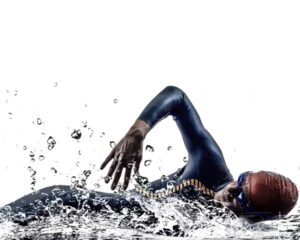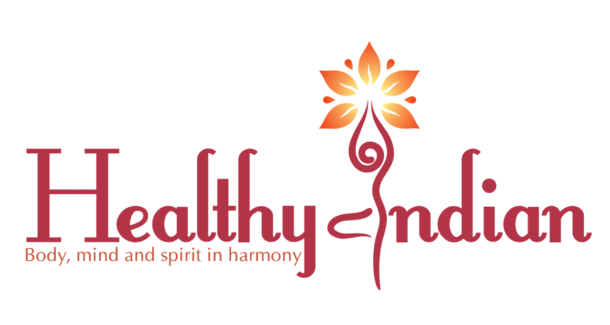Anika’s Zen and the Power of Gratitude. Right here for you, weekly, every Sunday.
Today was a hot, 93-degree Fahrenheit day. I decided to finish some planting around my garden, but 20 plants in, I was sweating while my knee started to hurt. By no means was this hard work. I am also lucky; I have a crew that comes and takes care of my garden. They cut it, trim it, make it look good. So, why was I in pain while planting today? Or could it even be called pain?
It made me think – what is the difference between pain and discomfort? And how does such a difference define the way we look at life? Does understanding the difference help us in expanding the definition of what we think we can do?
Pain vs. Discomfort
What is Pain? According to John Hopkins, Pain is an uncomfortable feeling that indicates to you that something may be wrong. It can be as simple as a headache or it can be steady, throbbing, stabbing, aching, pinching and sometimes, debilitating. Unknown to many, pain can also cause other physical symptoms such as nausea, dizziness, weakness, or drowsiness. As if that is not enough, I learnt that it can also cause emotional effects like anger, depression, mood swings or irritability. Pain has the ability to impact everything around you – your job, relationships, state of mind and ultimately your daily life!
Ever got a really bad headache? One that even Tylenol could not take care of? If yes, you know what I am talking about. Pain can be either acute or chronic. Acute is usually short-lived while chronic can be mild or severe, present for a long time and often a signal of something that requires long term remedial action. Because it is so vast and so unknown, currently there is no cure for ‘pain.’ All one can do is ‘manage’ it.
In Your Head Pain
Pain is also hard to pinpoint or describe. One of my favorite questions is when a healthcare provider asks you, “On a scale of 1 to 10, how bad is your pain?” What a great way to pause, think about it and more importantly, express it.
Unexplained chronic pain is the grey area between medicine and psychology. Because sometimes pain may not have any specific cause at all. Sometimes pain may just crop up because of a combination of many factors that often come together. Making it more multi-factorial vs. single-factorial. So, can nothing in particular actually hurt us? Evidence show that it actually can. Factors such as lack of sleep, high body fat, social isolation, smoking are known to correlate with pain. It looks like simply getting in shape, can perhaps, help with the pain.
A Sense of Discomfort

A Muscle called Willpower
If Pain is difficult to define, Discomfort is even harder. A broad term representing several different feelings and emotions, it is usually related to pain. Some sources do not distinguish between pain and discomfort. Others refer to different sources of discomfort, thereby leading to a lack of conceptual clarity.
Discomfort, like pain, can be physical or psychological. It is usually an unpleasant feeling, pushing us to avoid or reduce the source of the discomfort. Pain is usually one of the causes for discomfort, but not every discomfort can be attributed to pain.
Imagine describing what your Discomfort level is on a scale of 1 to 10. Exactly! Therefore, Discomfort in noncommunicative patients is assessed and measured via behavioral expression, also used to describe pain and agitation. Now you know why this can lead to discomfort sometimes being interpreted as pain.
Pushing the Limits
As I train for my first triathlon and my first serious mountain climb, it was important for me to understand the difference between pain and discomfort. I believe it is the difference between ‘comfort zone’ and the zone which push our limits, becoming the best versions of ourselves. It has been proven time and time again that when it comes to endurance, strength, and speed, there are physical limits. But most of us are capable of far more than we think. To a certain degree, those limits are physical. Muscles that aren’t conditioned for a certain task may tear under stress; there’s a point at which a swimmer’s body needs more oxygen when underwater. But the mind also plays a key role in setting boundaries of what we can accomplish. And of course, with practice, a swimmer may be able to spend more time underwater, with less oxygen.
Alex Hutchinson writes about it in his book “Endure: Mind, Body, and the Curiously Elastic Limits of Human Performance“. He writes that training the body also trains the mind to prepare for greater feats of endurance. He examines the ideas of South African physician and sports scientist Tim Noakes, who point out that we almost never come close to our physical limits – and that perhaps there’s good reason for us to stop before that extreme point.
Noakes points to a second-place Olympic marathoner. “Do you notice he’s not dead?” he asks Hutchinson in the book. “It means he could have run faster.” Our brains never allow us to reach that moment; it says “enough” long before we ever come close to pushing our true limits.
Reactions
When my friends heard that I was training for a triathlon, the reactions were amusing and surprising to say the least. I expected many to wish me luck, but the reactions were more like, “Why do you need to do this?”, ‘Be careful, you might injure yourself permanently”, “Why do all this now?” and so forth. To me, doing something that I have never done before is the most natural thing in the world. There was a time I struggled to do 30 laps across the pool; today I can do 160 with Zen-like ease! Putting again, into practice, Malcolm Gladwell’s concept of 10,000 hours.
Alex Hutchinson mentions in his book, “The process of training expands the capabilities of the muscles and heart, sure, but it also recalibrates the brain’s horizons,” His book is full of data indicating that learning to embrace physical pain also improves performance.
In studies, athletes sometimes do this by clenching their fists repeatedly while their arms were held in a blood pressure cuff. Can someone improve their marathon time just by getting to the point that they can physically withstand more pain? Who knows! But there are good reasons to think that might be the case. Perhaps that is what many describe as a runner’s high – the zone where pain, discomfort all disappear and all that remains is a ‘euphoric feeling’. I sometimes reach that right after my 130th lap!
How Far Can You Really Go?

A Muscle called Willpower
In 2004, Jure Robic won the Insight Race Across America for the 2nd year in a row. The RAAM race is a non-stop 3,000-mile bike tour, 800 miles longer than the Tour de France! Beginning in San Diego and ending in Atlantic City, it is, globally, one of the best-known tests of willpower. Non-stop, typically spanning 7 days, the racers spend as much time biking as they can, with little to no hours of sleep or rest.
The tests on the body and mind?
First, the heat of the desert means drinking as much as one liter of water per hour. Near the Great Plains, their digestive tracts begin to be tested by the 10,000+ calories that they need to consume every day. Then the contact with the bike itself. The feet swell up to double their normal size (remember being on long haul flights?). Thumb nerves stop functioning properly, and the riders’ rear ends…let’s not talk about it.
Archibald Hill proposed the idea in 1924 that when the body is working hard and depleting its energy, the brain will begin to send messages to the muscles to slow down, conserving energy. Ultra-marathoner and sports scientist Timothy Noakes tested this theory. He found that the brain was indeed sending messages to the body to “STOP!” when it sensed rapidly depleting energy stores, leading to a feeling of fatigue. But the fatigue is not linked to endurance potential. So, by ignoring his own brain’s messages of fatigue and only listening athletes were able to keep going, believing that when your body says that you cannot possibly push any more, you have only reached about 50% of what you capable of doing.
Willpower is a Muscle
Because willpower acts like a muscle, it adheres to the same principle as fatigue. When the brain begins expending mental energy, it will start sending messages to rest, making you feel mentally drained than you actually are in order to conserve mental resources to survive. How does this manifest? Eating unhealthy food, avoiding working out and the lack of willpower to pursue aspirations. Sounds like the kind of day I had today.
So, where does one Begin?
Have a greater Purpose:
In our darkest moments, when it feels like there is no way we can keep going, we need to have a purpose. Something that is more important than the pain we may be feeling or the absolute lack of energy at our disposal. If we can remember that purpose, it will trigger something called “Want Power” and give us the extra energy we need to keep going. Mine is to be the best version of myself, physically, mentally, and emotionally.
Be Socially Accountable:
Our teams and those around us, depend on us. If you are running a marathon to raise funds, it keeps us accountable to not just run but to maintain the speed that we have promised us. Now it is more than just endurance; now there is accountability involved. Research shows that we will go to great lengths to keep a promise to anyone else, except ourselves. We want them to know that we are someone who will keep their word.
Pre-commit:
It’s easy to get tired, especially while committing to something new, tempting us to take the easy way out. A diet is a great example. In those situations, you must have a pre-commitment that no matter how tired or tempted you are, you will stick to your goal. Write it down or perhaps, ask your best friend to remind you. Either ways, take the decision out of your hand, once committed.
Grateful for the Belief
Both belief and emotions can affect performance in significant ways. Cheering and making runners feel relaxed makes them burn less energy for instance. Smiling can make people sustain a performance longer. Heat affects people less if they’re told the temperature is lower than it actually is.
Some scientists hope that by forcing athletes to get better at sustaining boring tasks, their minds will be better equipped to handle the rigors of a grueling endurance test. Others think mindfulness can help. All in all, the investigation into the mind’s role in pushing performance limits makes it clear is that there’s no good reason to ever assume you can’t do slightly better.
I am grateful for the group of people around me. I am now socially accountable. Will I be able to climb that mountain, or complete my first triathlon? Who knows, but this I know: I can definitely do slightly better today than I did yesterday. And I am not going to let my mind convince me otherwise!
Read my previous blogs below:
- Anika’s Zen and the Power of Gratitude
- Sack Full of Breaths
- The Power of Silence: A Date with Myself
- Travel Through the Glass
- The Elusive Trophy
- The Joy of Everyday
- Does Love Have a Color?
- My Neighborhood, My Tribe
- The Snow Persisted
- Lucky Me, a Woman
- Science, the Real Hero
- Where Diamonds Fail
- An Optimistic World
- This Thing Called Blah
- Hope Springs Eternal
- The Prodigal Returns Home
- Living in the Past
- People Being People

Anika Sharma is a digital thought leader, a mother, a professor at New York University’s Stern School of Business. She was recently named as one of the top 150 digital global leaders to follow in 2021. When she is not busy working or raising her two teenage children, you can find her planting herbs in her garden, meditating with her friends, swimming long laps or filling rooms with her cackling laughter. Contact her at anikadas@gmail.com or on twitter
If you enjoyed this blog, read about the Many Benefits of Gratitude, Covid-19: How I am Learning to Cope, Seven Ways to Manage Your Emotions, Covid-19 and Beyond and the Rules of Simple Living.
Do you love our posts and recipes? We’d LOVE to see your creations so click a photo and tag us on Instagram with the hashtag #healthyindian3 and please give a star (★) rating below. Follow us on Facebook, Twitter, Pinterest, Instagram, YouTube & Tumblr for healthy, easy and delicious recipes and lifestyle tips.
*There could be affiliate links in this blog. As an Amazon Associate, we earn from qualifying purchases.


